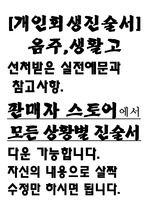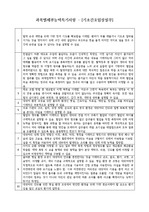Group-CPS를 활용한 창의․인성 함양 체육수업의 적용 가능성 탐색
* 본 문서는 배포용으로 복사 및 편집이 불가합니다.
서지정보
ㆍ발행기관 : 이화여자대학교 교과교육연구소
ㆍ수록지정보 : 교과교육학연구 / 16권 / 2호
ㆍ저자명 : 김성훈, 이종목
ㆍ저자명 : 김성훈, 이종목
목차
I. 서 론II. CPS의 이해와 체육수업 적용 방안
III. Group-CPS를 적용한 체육수업 설계
IV. 요약 및 제언
참고문헌
한국어 초록
본 연구의 목적은 초등학생들의 창의․인성 향상을 위한 체육수업 모형을 고안하고 이 모형이어떻게 적용될 수 있을지 살펴보는 것이다. 이를 위해 Isaken & Treffinger(1987)의 CPS 6단계 모
형에 한 가지 요소(실행)와 두 단계(실행 및 평가, 내면화)를 추가하여 4가지 요소, 8단계 모형으로
변형하고, 모둠 활동을 기본 학습 집단으로 한 Group-CPS 모형을 고안하였다. 고안한 모형으로
D광역시 소재 M초등학교 5학년 3개반을 대상으로 하여 주먹야구형 게임과 티볼형 게임에 적용하
였다. 자료의 수집은 심층면담, 참여관찰, 교사 수업일지 등을 통해 이루어졌으며, 수집된 자료는
전사, 주제별 약호화, 주제 생성의 단계를 거쳤다. 체육수업에 적용한 결과 학생들은 Group-CPS
모형에 대해 첫째, 한 가지 상황을 새롭고 다양한 시각에서 바라볼 수 있는 능력을 키워주는 수업
이라 생각하였고 둘째, 친구들과 협동하며 타인을 이해하게 되고, 우정을 쌓을 수 있는 수업이라고
인식하였다. 셋째, 다양한 모둠별 활동을 통해 자신의 의견을 당당히 표출할 수 있는 힘을 길러주는
수업이라고 하였고 넷째, 교사가 주도의 수업이 아니라 학생들 스스로 만들어가는 수업이라고 인식
하였다. 다섯째, 교사와 학생 모두 충분한 훈련과 준비가 필요한 수업이라고 인식하고 있었다. 신체
활동 시간이 줄어든 것에 대해 많이 아쉬워 한 반면 많은 학생들은 체육수업에 보다 적극적이 되었
으며 실생활 상황에서도 다양한 시각에서 바라보는 습관, 남을 배려하는 습관이 형성된 것을 볼 수
있었다. 이상의 연구결과로 볼 때 Group-CPS 모형은 하나의 체육수업 모형으로 충분히 그 가능
성이 있다고 할 수 있겠다.
영어 초록
The purpose of this study was to devise a physical exercise class model forcreativity-personality cultivation in elementary school students, and to investigate how this
model could be applied. For this purpose, this study devised a Group-CPS model that
transformed Isaken & Treffinger’s (1987) six-step CPS model into a four-element eight-step
model by adding an element (execution) and two steps (execution & evaluation, and
internalization), and that took a group activity as the basic learning unit. The devised model
was applied to a fist-baseball type game and a T-ball type game with three classes of the fifth
grade at M elementary school in D Metropolitan City as its subjects. The data collection was
implemented via profound interviews as a quality research method, participant observation,
and teachers’ class journals; the collected data underwent transcription, abbreviation by theme,
and theme generation. As a result of the application of the model to the physical exercise class,
it turned out as i) thinking again, ii) class made with friends (understanding others), iii)
expression of my earnest opinion (open question), iv) class that we make, and v) class that
needs preparation. It was observed that, as a result of the application of the model, many
students were more active in physical exercise class and were better equipped with the habits
of seeing from diverse perspectives in real life situations and of considering others. (231 words)


















